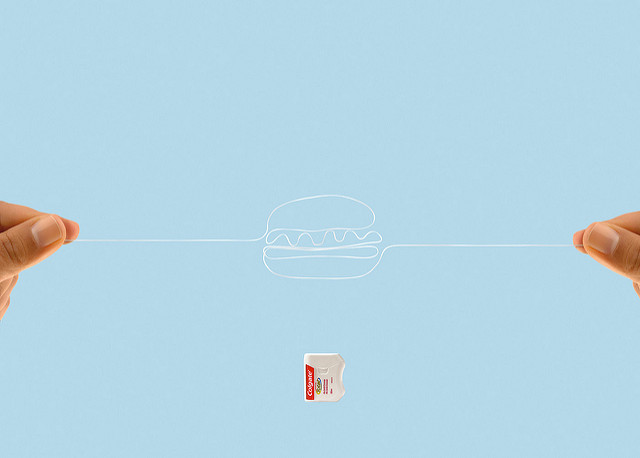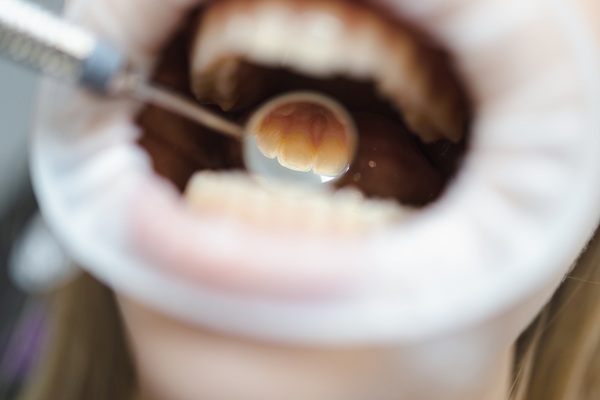Most of us know that we should be flossing but regard it as a bit of an optional extra in our dental care routine. Surely diligently brushing our teeth twice a day does the job? Wrong! Interdental plaque removal, aka flossing, may actually be the most important part of your oral hygiene routine.
“There are great benefits to using dental floss,” says Dr Digges, “and I believe it is an essential part of everyone’s oral hygiene routine.”
Most importantly, dental floss can reach the places between your teeth that your toothbrush can’t, and which are therefore often neglected. Flossing easily removes food particles and the build-up of plaque from between your teeth, helping maintain healthy teeth and gums and avoiding gum disease and tooth decay. Flossing also stimulates the gums, improving circulation which can promote healing. It also helps keep your breath fresher by removing the old food caught between your teeth.
An essential part of any good oral hygiene routine, flossing is simple, effective and very important way to help protect your teeth and gums.
How to Choose The Right Floss For You
Dr Digges notes that there are far more interdental cleaning tools on the market these days than the simple string floss that most of us are aware of. Each tool has its own advantages and is suited to particular types of patients, but it’s a good idea to experiment with the different tools until you find the one you are most comfortable with.
-
String or tape floss
This is probably the most well-known type of floss on the market and comes in a large variety of choices, including mint-flavoured, waxed and unwaxed. For those with larger spaces between the teeth, or with gum recession, better results can often be achieved with a wide, flat dental tape. For teeth that are closer together, a thinner, shred-resistant floss is most effective.
-
Flossing Picks or wands
These are similar to a toothpick, but they also have a little string of floss threaded to each end. They simply make flossing easier and are especially useful for those people with braces to help pick out food stuck behind the wire. An increasingly popular choice, floss picks are convenient for many people as they hold the floss for you.
-
Water flossers
Also known as oral irrigators or dental water jets, these products mix water and air and force it out from the tip to remove food particles and plaque between the teeth. Water flossers are popular among patients after getting a dental bridge or recovering from periodontal pockets, and again those people with braces, because they provided an added depth of cleaning. But they are increasingly also the tool of choice for everyday flossing, as the deeper clean helps reduce the risk of periodontal disease and gingivitis. Water flossers also help people avoid flossing too hard and causing bleeding.
-
Interdental brushes
These are simple to use and can be particularly effective for removing the plaque that builds in wider gaps between teeth, where floss may be too thin to properly clean. These tools come in different sizes: the bigger the gap you are trying to clean, the wider the interdental brush will need to be.
-
Floss threaders
This is a disposable tool which can be used with any kind of floss, and is particularly effective to help people with braces.
Effective Flossing Techniques
Dr Digges says even his patients who are committed flossers are often surprised to find out they have been flossing wrong all along. “There actually is a right and wrong way to floss,” says Dr Digges. In our short video below, Dr Digges demonstrates the ultimate guide to flossing using the various products that are available, to help you learn the correct flossing techniques. In summary, the correct technique is as follows:
How to Use Dental Floss Correctly
- Take around 18 inches of floss and wind most of the floss around each of your middle fingers, with a couple of inches between to work with.
- With the floss held taut between thumbs and index fingers, gently slide it upwards and downwards between the teeth. Curve the floss around the base of each of your teeth, going beneath the gumline. Gently being the operative word. It’s important not to force the floss, which may cut or bruise the sensitive gum tissue.
- Adjust the floss in your hands to utilise a clean piece of floss from tooth to tooth.
- Remove the floss by gently bringing the floss back away from the teeth.

When Should You Floss?
Dr Digges recommends you floss once a day, and opt for after dinner time. Preventing decay at night is very important. You salivate less when asleep, and less saliva means more bacteria growth in your mouth, leading to acid production which etches into your tooth enamel.
Is it normal to bleed during flossing?
Patients sometimes ask if it is normal to bleed while flossing. Dr Digges says in most cases, no. “If your gums bleed frequently during flossing, this can certainly be a sign of the early stages of gingivitis or periodontal disease. But it can also mean you’re simply flossing too hard,” says Dr Digges. The trick is to be very careful when flossing and never to use force. Pulling the floss too aggressively up to the gum can lead to tissue damage and sensitivity. In the end, it’s similar to brushing—always be gentle.
Using dental floss can greatly benefit your oral hygiene and help you maintain a healthy mouth—far from being an optional extra, interdental plaque removal tools should be seen as just as important as your trusty toothbrush.




